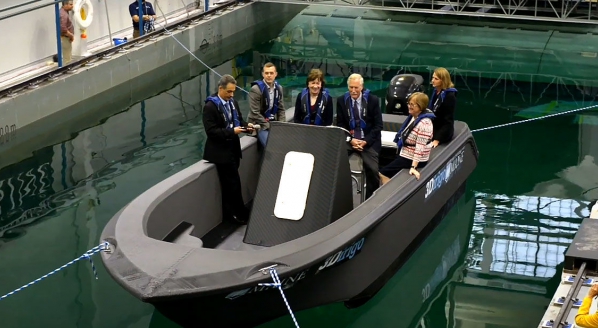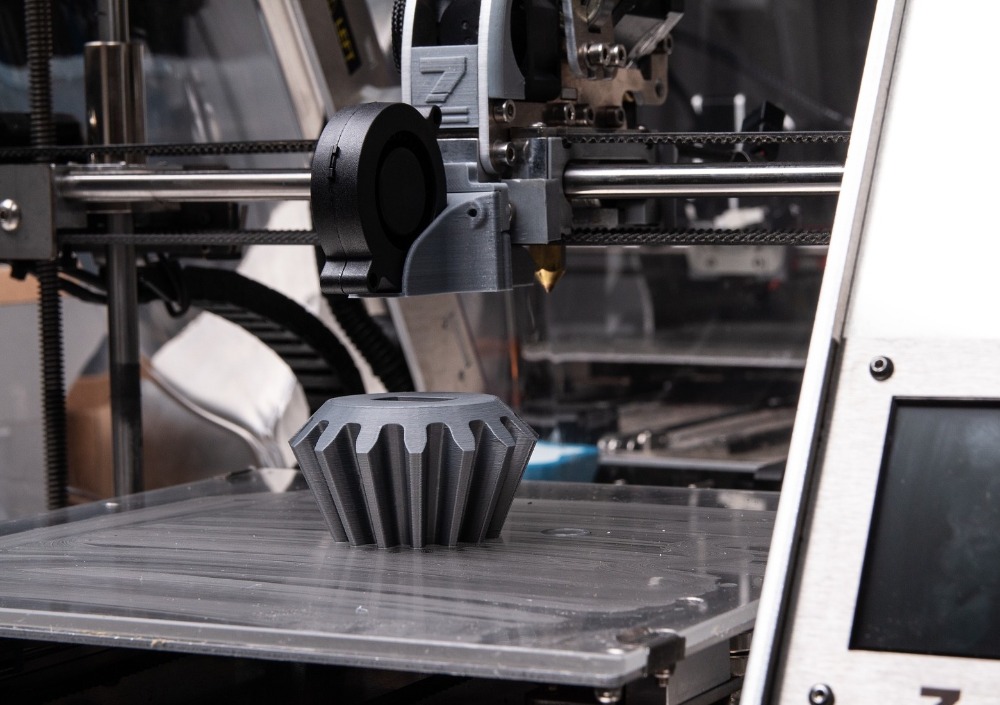Additive manufacturing and the supply chain
The technology can be used for spare parts, thereby reducing lead times, cost, inventory and carbon footprint…
Additive manufacturing (AM), also referred to as 3D printing, is a common name for technologies where an object is manufactured layer by layer. Additive manufacturing enables the building of three-dimensional, solid objects from digital models, and thus the realisation of complex parts. This is in contrast with many traditional manufacturing methods, where the final parts are machined out from a pre-made form.
AM is expected to revolutionise the way products are designed, manufactured and distributed. The technology will enable new supply chains and on-site 3D printing of spare parts, adding value in many areas including shorter lead times, less storage and reduced inventory, as well as reducing carbon footprints. AM will also enable technological innovation and novel designs with high complexity, new repair methods and the use of unconventional or new materials.
DNV GL believes that AM has the potential to transform the maritime industry’s supply chain. “For the superyacht industry, it could mean mass customisation as opposed to mass production – traditionally to make something cost effective it had to be mass produced, but with 3D printing there is no reason why everything you manufacture can’t be different,” explains Simon Ratcliffe, business transformation manager at DNV GL. “Other benefits for the industry include the ability to use more innovative materials, such as titanium, and have access to spare parts on demand.”
Ratcliffe also points out that one day the industry might see 3D printed hull forms, which is already happening in the boating market on smaller scale. In 2019, Tahoe Boats made its first hull mould using 3D printing. Working with Thermwood Corporation, the boat manufacturer used the composite company’s large-scale additive manufacturing system to print the mould for the new Tahoe T16. The University of Maine also recently broke the Guinness world record for the largest printed vessel and the largest 3D-printed solid object.
AM is already disrupting supply chains in automotive, aerospace and consumer products. As DNV sees it it, it is in its infancy in the maritime sectors as they ponder challenges similar to those that confronted Netflix in the transition from DVDs to online streaming of video. As well as novel profit/cost models, the supply chain is grappling with intellectual property (IP) and usage rights for OEM designs, and standardisation of technology interfaces.
The challenge now is to get all stakeholders in the maritime industries talking and looking at the best ways to ensure that everyone benefits from AM. DNV has initiated several joint industry projects with customers globally in certification and qualification areas of AM for reconditioning old parts or creating on-demand new spare parts, and for fabrication of large-scale structural parts.
Profile links
NEW: Sign up for SuperyachtNewsweek!
Get the latest weekly news, in-depth reports, intelligence, and strategic insights, delivered directly from The Superyacht Group's editors and market analysts.
Stay at the forefront of the superyacht industry with SuperyachtNewsweek
Click here to become part of The Superyacht Group community, and join us in our mission to make this industry accessible to all, and prosperous for the long-term. We are offering access to the superyacht industry’s most comprehensive and longstanding archive of business-critical information, as well as a comprehensive, real-time superyacht fleet database, for just £10 per month, because we are One Industry with One Mission. Sign up here.
Related news

Lessons from aerospace
What can the superyacht market learn from how the aerospace industry manages its supply chain?
Technology

Trends, tribes, technology and tolerance
Marketing expert, Callum Gill on the way tools and technology will shape the future demands of consumers
Business

University of Maine 3D prints 8m vessel
The university broke the Guinness world record for the largest printed vessel and the largest 3D-printed solid object
Technology

How can artificial intelligence improve the superyacht industry?
A discussion on how the technology fits into superyacht design, building and operations will take place at TSF 2019
Technology

FMD launches new wastewater treatment solution
The Sequencing Batch Reactor is an environmentally-responsible solution for wastewater treatment at sea
Technology

Superyacht cybersecurity: a whole of industry approach
The Atlas Cybersecurity team offer advice on how to become cyber assets and not cyber liabilities
Technology
Related news
Lessons from aerospace
5 years ago
Trends, tribes, technology and tolerance
5 years ago
University of Maine 3D prints 8m vessel
5 years ago
FMD launches new wastewater treatment solution
5 years ago
NEW: Sign up for
SuperyachtNewsweek!
Get the latest weekly news, in-depth reports, intelligence, and strategic insights, delivered directly from The Superyacht Group's editors and market analysts.
Stay at the forefront of the superyacht industry with SuperyachtNewsweek




